The Secret Weapon All Grain Salads Need
I'm talking about onion confit oil. Have you heard of it? It's the secret weapon that every seasoned chef uses on a regular basis. So it's time to bring it on home and add it to your repertoire of culinary techniques.
Its main application is in grain salads. In fact, onion confit oil is what takes a so-so grain salad to an out-of-this-world grain salad. Think quinoa, farro, or tabbouleh.
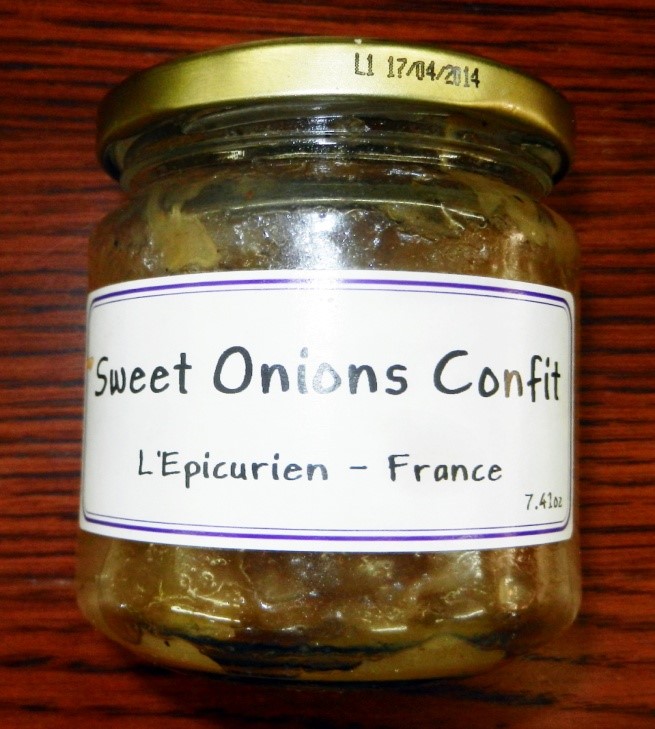
According to Wikipedia, confit (pronounced [kɔ̃fi] or in English "con-fee") comes from the French word confire which means literally "preserved." A confit is any type of food that is cooked slowly in oil or fat at low temperatures over a long period of time as a method of preservation.
In actuality, confit is a posh name for something you cook the heck out of until it ends up looking like jam. Or marmalade. It's a way of preserving foods by cooking it in (its own) fat. This can be meat, poultry, fruit, or vegetables.
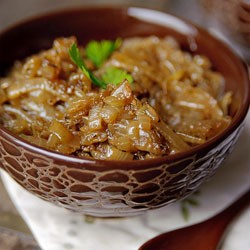
So in this case, we're talking vegetables-onions, to be precise. To make a winning onion confit oil, take these three steps:
1. Dice 3 or 4 onions
2. Cover them in olive oil (literally)
3. Cook them slowly until they are caramelized and sweet, for approximately an hour.
The onions will of course go into the farro salad, but the leftover oil is the unheralded hero of this dish: It's extremely savory, a little sweet, and the perfect counterbalance to the nutty and earthy flavor of the farro. The truth is, if you took plain cooked farro and seasoned it only with salt, red wine vinegar, and onion confit oil, it would still sing.
And that's because of the onion confit oil. It establishes a baseline of flavor-salty, fatty, acidic, sweet. From there just add some nuts and cheese to give the dish texture and increase its savory flavor. Then, depending on the time of year, add whatever produce strikes your fancy. In the spring, it may be asparagus. In the summer, zucchini.
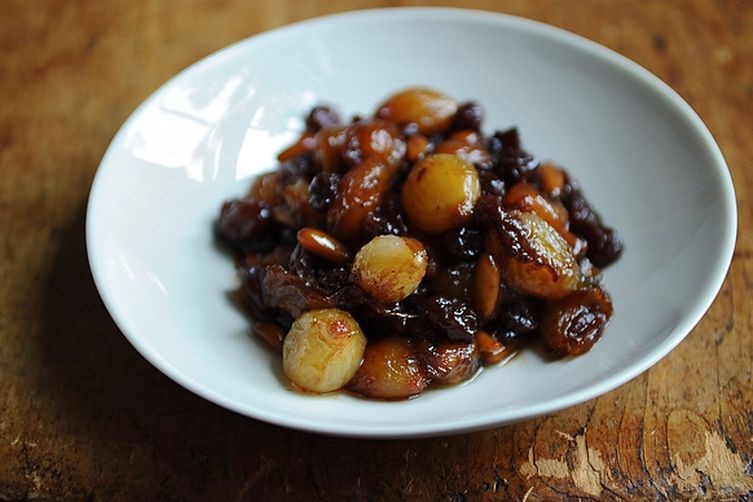
Just be sure to play around with this concept. Try experimenting not only with flavors but with colors and textures as you decide what ingredients you'll add to your salad. Just remember, whether you're cooking farro, kasha, tabbouleh, or quinoa, a little bit of onion confit oil and a splash of vinegar are sure to turn a dry grain salad into something deeply satisfying.
Master chef, Josh Cohen (of Food 52), shares his recipe for a farro salad that sparkles, thanks to onion confit oil:
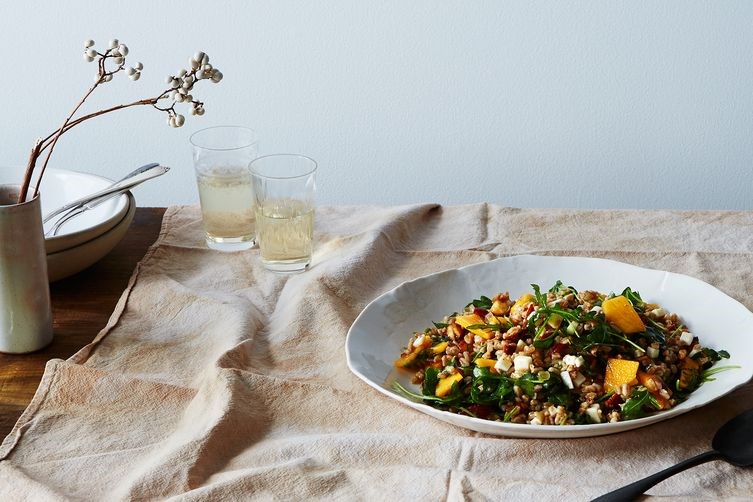
FARRO SALAD WITH ONION CONFIT OIL
1/2 cup olive oil
3 large onions, diced
Salt to taste
Freshly ground black pepper to taste
1 1/2 cups dried farro (approximately 1/2 pound)
2 fuyu persimmons, skin removed and cut into bite-sized pieces
1 cup chopped toasted almonds
1 cup diced goat Gouda, approximately 6 ounces (or substitute your favorite hard cheese)
1/4 cup red wine vinegar
3 ounces arugula
Add the olive oil to a dutch oven or large high-walled sauté pan and set the pan over medium heat. When the oil is hot, add the onions. Season lightly with salt and freshly ground black pepper, and stir regularly until the onions soften and turn translucent. Adjust the heat so that the onions are gently simmering in the oil, and continue to stir occasionally to prevent the onions from burning. (You may need to lower the heat slightly.) After approximately 45 minutes, the onions should be soft, sweet, and caramelized. At this point, remove them from the heat and set them aside.
While the onions are cooking, bring a large pot of water to a boil. Salt the boiling water so that it tastes like the ocean, and add the farro. Cook the farro, stirring occasionally, until it is tender. The cooking time on farro can vary, so start tasting your farro after approximately 25 minutes of cooking. When it tastes soft but still chewy, it is ready. (If you want, you can taste the farro after 15 minutes of cooking, so that you understand what undercooked farro tastes like and have a point of reference.) When the farro is cooked, drain it and spread it out on a rimmed baking sheet to cool.
Transfer the farro to a large mixing bowl. Set a fine mesh strainer over a medium sized mixing bowl and pour the onion mixture into the strainer, separating the oil from the onions. Add the onions to the farro, along with ⅓ cup of the onion confit oil. Mix to combine. Reserve any remaining onion confit oil. If the farro salad seems dry, you can add the remaining oil. Or, store it in your refrigerator and use it on another day to fry an egg or make a salad dressing.
Add the persimmon, almonds, cheese, and red wine vinegar to the farro. Stir to combine. Taste the farro salad, and adjust the seasoning as necessary with salt and pepper. Add the arugula, and stir to combine. I like to wait 10 to 15 minutes before serving to allow the arugula to wilt slightly. This dish can also be made ahead of time and stored in the refrigerator. Just remember to remove the farro salad from the refrigerator at least 30 minutes before serving, so that it has a chance to come to room temperature.
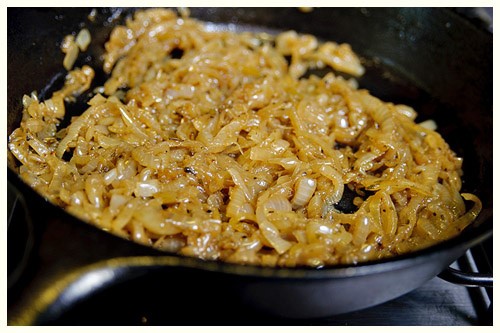
But if you don't want to go to the bother of making this farro salad, do take the time to make some onion confit oil. It's SO good. If not in a grain salad, then eat them on top of your pork chops or steak. Use them to liven up pizzas or Panini's. Or simply grab a fork and dig in!
- www.oillicious.com
- www.tastespotting.com
- www.food52.com
- www.kayotickitchen.com
 Alice Osborne
Alice Osborne
Weekly Newsletter Contributor since 2006
Email the author! alice@dvo.com
